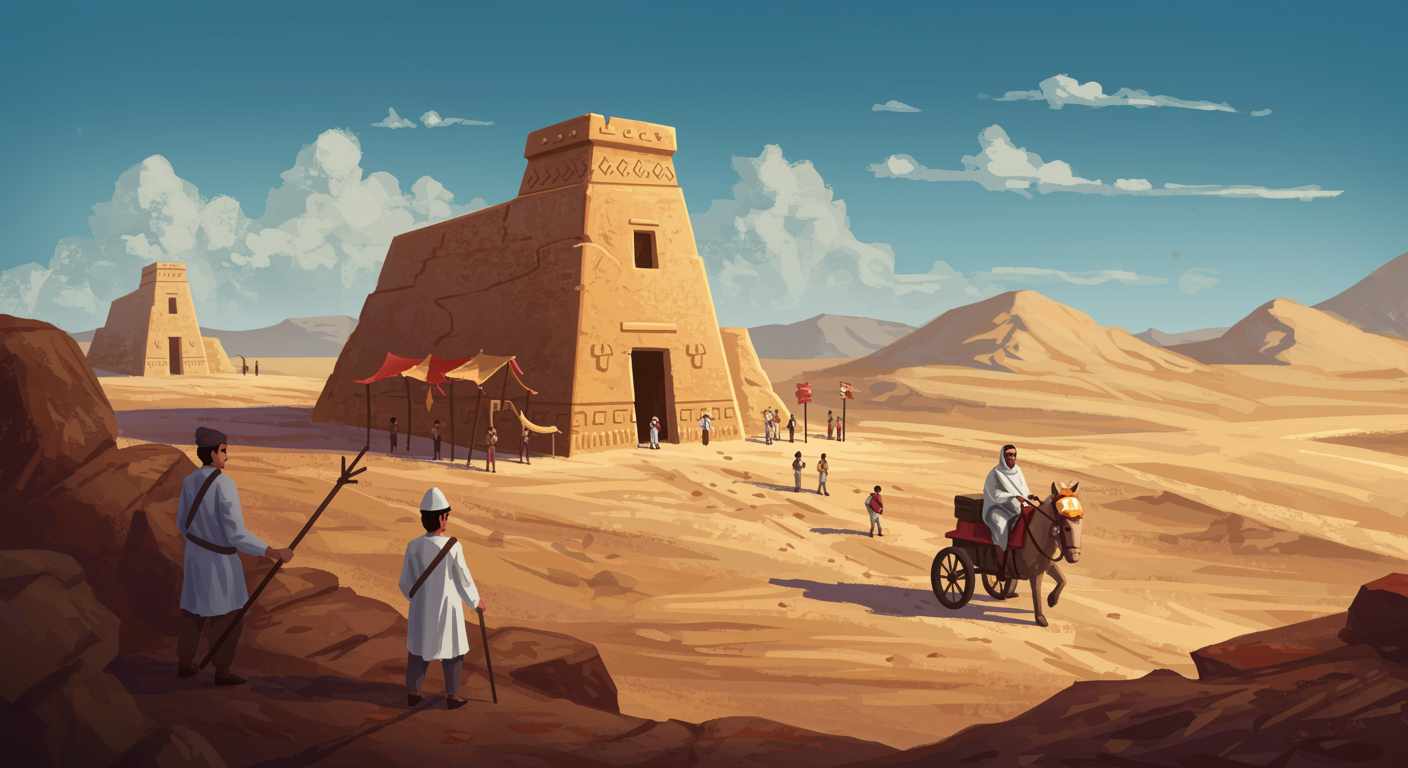
Picture an empire, vast and powerful, crisscrossed by an elaborate network of well-maintained roads. These pathways stretch for thousands of kilometers, connecting distant cities, facilitating trade, and ensuring rapid communication across diverse terrains. Now, imagine that on these meticulously constructed roads, you would rarely, if ever, see a wheeled cart or a chariot. No rumbling wagons, no horse-drawn conveyances. This might seem counterintuitive to our modern understanding of infrastructure, yet it was the logistical reality for several highly advanced ancient civilizations.
It’s a peculiar puzzle for anyone studying the past: why invest immense resources in building roads that appear, by our standards, incomplete? For many, the very word “road” conjures images of wheels—the means by which goods and people are transported efficiently. However, when we look at the historical record, particularly in the Andes and Mesoamerica, we uncover a different story, one where human ingenuity found solutions perfectly adapted to their environment and available technology, entirely bypassing the wheel for road-based transport.
One of the primary reasons these ancient societies often eschewed wheeled vehicles for their extensive road networks was the unforgiving landscape. Consider the Inca Empire, which dominated the rugged Andean mountains of South America. Their famous Qhapaq Ñan, or Royal Road, stretched over 40,000 kilometers, connecting coastal plains, high-altitude plateaus, and dense jungle fringes. Building a road through such a varied and often precipitous terrain is an engineering marvel in itself. Imagine trying to navigate a wheeled cart up a steep mountain pass, across a swaying suspension bridge over a canyon, or along a narrow path carved into a sheer cliff face. It’s simply impractical, if not impossible. The Inca roads were masterfully designed for foot traffic, pack animals like llamas, and human porters carrying goods.
Similarly, in Mesoamerica, civilizations like the Maya constructed elaborate causeways, known as sacbeob (white roads). These raised limestone pathways cut through dense jungle and across wetlands, connecting city-states and ceremonial centers. While the terrain here was less mountainous than the Andes, the dense vegetation and often swampy lowlands still presented significant challenges for wheeled transport. Furthermore, a crucial element was missing from both these regions: large, domesticated draft animals suitable for pulling heavy loads in a wheeled vehicle. While the Maya had dogs and turkeys, and the Inca had llamas and alpacas, none possessed the strength or temperament of, say, an ox or a horse to make wheeled transport viable on a large scale, especially given the challenging topography.
So, if not for wheels, what was the purpose of these monumental road systems? Their function was multifaceted and critical to the stability and operation of these empires. Firstly, they facilitated rapid communication. The Inca, for instance, employed a sophisticated relay system of runners called chasqui. These highly trained messengers could cover hundreds of kilometers in a single day, ensuring that imperial decrees, news, and goods like fresh fish reached the emperor within days, even from distant provinces. The roads were their lifeline.
Secondly, these networks were essential for military logistics. Moving troops, supplies, and equipment quickly across vast distances was paramount for maintaining control and responding to threats. An empire’s power often lay in its ability to project force and authority throughout its territories, and well-maintained roads made this possible. They also enabled centralized administrative control, allowing officials to travel between regions and collect tribute. Finally, these roads served as conduits for trade, albeit primarily for goods that could be carried by human porters or pack animals. Items like textiles, ceramics, foodstuffs, and precious metals were regularly moved along these routes.
The Maya sacbeob, while also serving practical purposes for trade and communication, often held significant ceremonial and symbolic importance. Their straight lines, connecting major temples and plazas, sometimes seemed to align with astronomical events, underscoring the deep connection between infrastructure, power, and the sacred in Maya culture. These weren’t just paths; they were arteries of the state, embodying its reach and control. Even when they encountered the concept of a wheel, as some Mesoamerican cultures did in children’s toys, they never applied it to transportation for practical reasons. The combination of dense jungle, rivers, and the absence of suitable large draft animals meant that human carriers remained the most efficient and adaptable solution.
Understanding these historical road systems reminds us that technological solutions are deeply intertwined with environmental conditions, available resources, and cultural priorities. The absence of wheeled transport on these roads was not a sign of technological backwardness but rather an elegant adaptation to specific circumstances. It shows us how different societies, faced with similar needs for communication and transport, developed distinct, highly effective engineering solutions tailored to their unique world. It invites us to consider that innovation isn’t a linear march toward a single “best” solution, but a diverse and context-dependent process, proving that a path doesn’t always need to roll to be revolutionary.